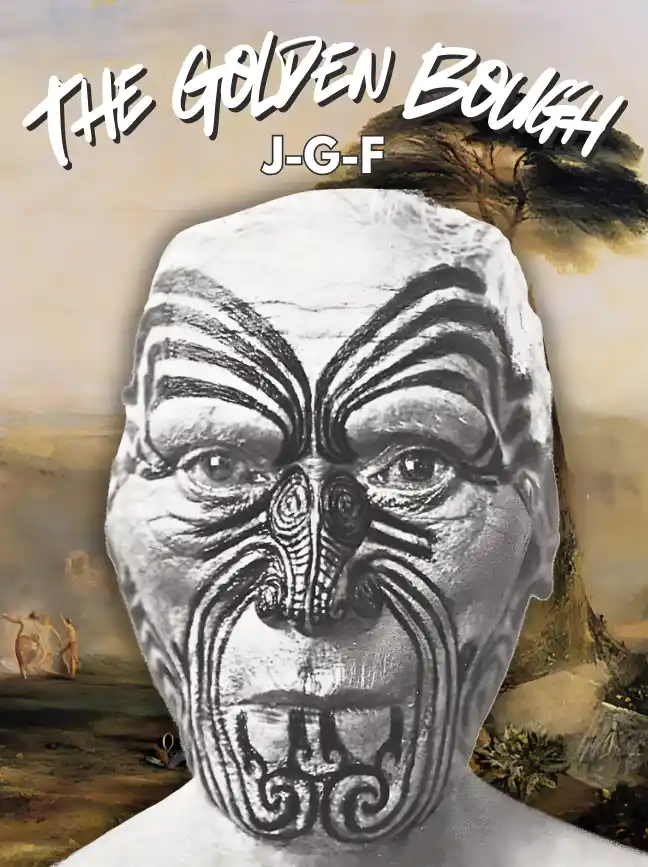CHAPTER 8
THE KINGS OF ROME
i
FROM the foregoing survey of custom and legend we may infer that the sacred marriage of the powers both of vegetation and of water has been celebrated by many peoples for the sake of promoting the fertility of the earth, on which the life of animals and men ultimately depends, and that in such rites the part of the divine bridegroom or bride is often sustained by a man or woman. The evidence may, therefore, lend some countenance to the conjecture that in the sacred grove at Nemi, where the powers of vegetation and of water manifested themselves in the fair forms of shady woods, tumbling cascades, and glassy lake, a marriage like that of our King and Queen of May was annually celebrated between the mortal King of the Wood and the immortal Queen of the Wood, Diana. In this connexion an important figure in the grove was the water-nymph Egeria, who was worshipped by pregnant women because she, like Diana, could grant them an easy delivery. From this it seems fairly safe to conclude that, like many other springs, the water of Egeria was credited with a power of facilitating conception as well as delivery. The votive offerings found on the spot, which clearly refer to the begetting of children, may possibly have been dedicated to Egeria rather than to Diana, or perhaps we should rather say that the water-nymph Egeria is only another form of the great nature- goddess Diana herself, the mistress of sounding rivers as well as of umbrageous woods, who had her home by the lake and her mirror in its calm waters, and whose Greek counterpart Artemis loved to haunt meres and springs. The identification of Egeria with Diana is confirmed by a statement of Plutarch that Egeria was one of the oak-nymphs whom the Romans believed to preside over every green oak-grove; for while Diana was a goddess of the woodlands in general she appears to have been intimately associated with oaks in particular, especially at her sacred grove of Nemi. Perhaps, then, Egeria was the fairy of a spring that flowed from
the roots of a sacred oak. Such a spring is said to have gushed from the foot of the great oak at Dodona, and from its murmurous flow the priestess drew oracles. Among the Greeks a draught of water from certain sacred springs or wells was supposed to confer prophetic powers. This would explain the more than mortal wisdom with which, according to tradition, Egeria inspired her royal husband or lover Numa. When we remember how very often in early society the king is held responsible for the fall of rain and the fruitfulness of the earth, it seems hardly rash to conjecture that in the legend of the nuptials of Numa and Egeria we have a reminiscence of a sacred marriage which the old Roman kings regularly contracted with a goddess of vegetation and water for the purpose of enabling him to discharge his divine or magical functions. In such a rite the part of the goddess might be played either by an image or a woman, and if by a woman, probably by the Queen.
If there is any truth in this conjecture, we may suppose that the King and Queen of Rome masqueraded as god and goddess at their marriage, exactly as the King and Queen of Egypt appear to have done. The legend of Numa and Egeria points to a sacred grove rather than to a house as the scene of the nuptial union, which, like the marriage of the King and Queen of May, or of the vine-god and the Queen of Athens, may have been annually celebrated as a charm to ensure the fertility not only of the earth but of man and beast.
Now, according to some accounts, the scene of the marriage was no other than the sacred grove of Nemi, and on quite independent grounds we have been led to suppose that in that same grove the King of the Wood was wedded to Diana. The convergence of the two distinct lines of enquiry suggests that the legendary union of the Roman king with Egeria may have been a reflection or duplicate of the union of the King of the Wood with Egeria or her double Diana. This does not imply that the Roman kings ever served as Kings of the Wood in the Arician grove, but only that they may originally have been invested with a sacred character of the same general kind, and may have held office on similar terms. To be more explicit, it is possible that they reigned, not by right of birth, but in virtue of their supposed divinity as representatives or embodiments of a god, and that as such they mated with a goddess, and had to prove their fitness from time to time to discharge their divine functions by engaging in a severe bodily struggle, which may often have proved fatal to them, leaving the crown to their victorious adversary. Our knowledge of the Roman kingship is far too scanty to allow us to affirm any one of these propositions with confidence;
but at least there are some scattered hints or indications of a similarity in all these respects between the priests of Nemi and the kings of Rome, or perhaps rather between their remote predecessors in the dark ages which preceded the dawn of legend.
Egeria at Nemi a nymph of water and of the oak, perhaps a
form of Diana.
The legend of nuptials of Numa and Egeria may be a
reminiscence of a sacred marriage which the kings of Rome
contracted with the goddess of water and of vegetation.
ii
In the first place, then, it would seem that the Roman king personated no less a deity than Jupiter himself. For down to imperial times victorious generals celebrating a triumph, and magistrates presiding at the games in the Circus, wore the costume of Jupiter, which was borrowed for the occasion from his great temple on the Capitol; and it has been held with a high degree of probability both by ancients and moderns that in so doing they copied the traditionary attire and insignia of the Roman kings. They rode a chariot drawn by four laurel-crowned horses through the city, where every one else went on foot; they wore purple robes embroidered or spangled with gold; in the right hand they bore a branch of laurel and in the left hand an ivory sceptre topped with an eagle; a wreath of laurel crowned their brows; their face was reddened with vermilion; and over their head a slave held a heavy crown of massy gold fashioned in the likeness of oak leaves. In this attire the assimilation of the man to the god comes out above all in the eagle-topped sceptre, the oaken crown, and the reddened face. For the eagle was the bird of Jove, the oak was his sacred tree, and the face of his image standing in his four-horse chariot on the Capitol was in like manner regularly dyed red on festivals; indeed, so important was it deemed to keep the divine features properly rouged that one of the first duties of the censors was to contract for having this done. The Greeks sometimes painted red the face or the whole body of the wine-god Dionysus. These customs may have been a substitute for an older practice of feeding a god by smearing the face, and especially the lips, of his idol with the blood of a
sacrificial victim. Many examples of such a practice might be adduced from the religion of barbarous peoples. As the triumphal procession always ended in the temple of Jupiter on the Capitol, it was peculiarly appropriate that the head of the victor should be graced by a crown of oak leaves, for not only was every oak consecrated to Jupiter, but the Capitoline temple of the god was said to have been built by Romulus beside a sacred oak, venerated by shepherds, to which the king attached the spoils won by him from the enemy’s general in battle. We are expressly told that the oak crown was sacred to Capitoline Jupiter; a passage of Ovid proves that it was regarded as the god’s special emblem. Writing in exile on the shores of the Black Sea, the poet sends the book which he has just composed to Rome to be published there; he personifies the volume and imagines it passing along the Sacred Way and up to the door of the emperor’s stately palace on the Palatine hill. Above the portal hung shining arms and a crown of oak leaves. At the sight the poet starts: ‘Is this, quoth I, the house of Jove? For sure to my prophetic soul the oaken crown was reason good to think it so.’*
The Roman king seems to have personated Jupiter and worn his
costume.
The oak crown as an emblem of Jupiter and of the Roman
emperors.
According to a tradition which we have no reason to reject, Rome was founded by settlers from Alba Longa, a city situated on the slope of the Alban hills, overlooking the lake and the Campagna. Hence if the Roman kings claimed to be representatives or embodiments of Jupiter, the god of the sky, of the thunder, and of the oak, it is natural to suppose that the kings of Alba, from whom the founder of Rome traced his descent, may have set up the same claim before them. Now the Alban dynasty bore the name of Silvii or Wood, and it can hardly be without significance that in the vision of the historic glories of Rome revealed to Aeneas in the underworld, Virgil, an antiquary as well as a poet, should represent all the line of Silvii as crowned with oak. A chaplet of oak leaves would thus seem to have been part of the insignia of the old kings of Alba Longa as of their successors the kings of Rome; in both cases it marked the monarch as the human representative of the oak-god. With regard to Silvius, the first king of the
Alban dynasty, we are told that he got his name because he had been born or brought up in the forest, and that when he came to man’s estate he contested the kingdom with his kinsman Julus, whose name, as some of the ancients themselves perceived, means the Little Jupiter. The people decided in favour of Silvius, but his rival Julus was consoled for the loss of the crown by being invested with religious authority and the office of chief pontiff, or perhaps rather of Flamen Dialis, the highest dignity after the kingship. From this Julus or Little Jupiter, the noble house of the Julii, and hence the first emperors of Rome, believed themselves to be sprung.
The kings of Alba seem also to have claimed to represent
Jupiter.
The Silvii and the Julii.
Julus, the little Jupiter.
But in ceding the pontificate to their rivals, it would seem that the reigning dynasty of the Silvii or Woods by no means renounced their own claim to personate the god of the oak and the thunder; for the Roman annals record that one of them, Romulus, Remulus, or Amulius Silvius by name, set up for being a god in his own person, the equal or superior of Jupiter. To support his pretensions and overawe his subjects, he constructed machines whereby he mimicked the clap of thunder and the flash of lightning.
Diodorus relates that in the season of fruitage, when thunder is loud and frequent, the king commanded his soldiers to drown the roar of heaven’s artillery by clashing their swords against their shields. But he paid the penalty of his impiety, for he perished, he and his house, struck by a thunderbolt in the midst of a dreadful storm. Swollen by the rain, the Alban lake rose in flood and drowned his palace. But still, says an ancient historian, when the water is low and the surface unruffled by a breeze, you may see the ruins of the palace at the bottom of the clear lake. Taken along with the similar story of Salmoneus, king of Elis, this legend points to a real custom observed by the early kings of Greece and Italy, who like their fellows in Africa down to modern times may have been expected to produce rain and thunder for the good of the crops. The priestly king Numa passed for an adept in the art of drawing down lightning from the sky. Mock
thunder, we know, has been made by various peoples as a rain-charm in modern times; why should it not have been made by kings in antiquity?
The Alban kings seem to have been expected to make thunder
and rain for the good of their subjects.
Thus, if the kings of Alba and Rome imitated Jupiter as god of the oak by wearing a crown of oak leaves, they seem also to have copied him in his character of a weather-god by pretending to make thunder and lightning.
And if they did so, it is probable that, like Jupiter in heaven and many kings on earth, they also acted as public rain-makers, wringing showers from the dark sky by their enchantments whenever the parched earth cried out for the refreshing moisture. At Rome the sluices of heaven were opened by means of a sacred stone, and the ceremony appears to have formed part of the ritual of Jupiter Elicius, the god who elicits from the clouds the flashing lightning and the dripping rain. And who so well fitted to perform the ceremony as the king, the living representative of the sky-god?
Every Latin town probably had its local Jupiter.
The conclusion which we have reached as to the kings of Rome and Alba probably holds good of all the kings of ancient Latium: each of them, we may suppose, represented or embodied the local Jupiter. For we can hardly doubt that of old every Latin town or settlement had its own Jupiter, as every town and almost every church in modern Italy has its own Madonna; and like the Baal of the Semites the local Jupiter was commonly worshipped on high places. Wooded heights, round which the rain-clouds gather, were indeed the natural sanctuaries for a god of the sky, the rain, and the oak. At Rome he occupied one summit of the Capitoline hill, while the other summit was assigned to his wife Juno, whose temple, with the long flight of stairs leading up to it, has for ages been appropriately replaced by the church of St Mary ‘in the altar of the sky’* (in Araceli).
Many local Jupiters in Latium.
Capitoline Jupiter and Juno.
As the oak crown was sacred to Jupiter and Juno on the Capitol, so we may suppose it was on the Alban Mount, from which the Capitoline worship was derived. Thus the oak-god would have his oak-goddess in the sacred oak grove. So at Dodona the oak-god Zeus was coupled with Dione, whose very name is only a dialectically different form of Juno; and so on the top of Mount Cithaeron he was periodically wedded to an oaken image of Hera. It is probable, though it cannot be positively proved, that the sacred marriage of Jupiter and Juno was annually celebrated by all the peoples of the Latin stock in the month which they named after the goddess, the midsummer month of June. Now on the first of June the Roman pontiffs performed certain rites in the grove of Helernus beside the Tiber, and on the same day, and perhaps in the same place, a nymph of the grove, by name Carna, received offerings of lard and bean-porridge. She was said to be a huntress, chaste and coy, who gave the slip to her lovers in the depths of the wood, but was caught by Janus. Some took her to be Diana herself. If she were indeed a form of that goddess, her union with Janus, that is, Dianus, would be appropriate; and as she had a chapel on the Caelian hill, which was once covered with oak-woods, she may have been, like Egeria, an oak- nymph. Further, Janus, or Dianus, and Diana, were originally mere doubles of Jupiter and Juno, with whom they coincide in name and to some extent in function. Hence it appears to be not impossible that the rite celebrated by the pontiffs on the first of June in the sacred grove of Helernus was the marriage of Jupiter and Juno under the forms of Janus and Diana.
Sacred marriage of Jupiter and Juno.
Janus and carna.
If at any time of the year the Romans celebrated the sacred marriage of Jupiter and Juno, as the Greeks commonly celebrated the corresponding marriage of Zeus and Hera, we may suppose that under the Republic the ceremony was either performed over images of the divine pair or acted by the Flamen Dialis and his wife the Flaminica. For the Flamen Dialis was the priest of Jove; indeed, ancient and modern writers have regarded him, with much probability, as a living image of Jupiter, a human embodiment of the sky-god. In earlier times the Roman king, as representative of Jupiter, would naturally play the part of the heavenly bridegroom at the sacred
marriage, while his queen would figure as the heavenly bride, just as in Egypt the king and queen masqueraded in the character of deities, and as at Athens the queen annually wedded the vine-god Dionysus. That the Roman king and queen should act the parts of Jupiter and Juno would seem all the more natural because these deities themselves bore the title of King and Queen. Even if the office of Flamen Dialis existed under the kings, as it appears to have done, the double representation of Jupiter by the king and the flamen need not have seemed extraordinary to the Romans of the time.
The same sort of duplication, as we saw, appears to have taken place at Alba, when the Julii were allowed to represent the supreme god in the character of Little Jupiters, while the royal dynasty of the Silvii continued to wield the divine thunder and lightning. And long ages afterwards, history repeating itself, another member of the Julian house, the first emperor of Rome, was deified in his lifetime under the title of Jupiter, while a flamen was appointed to do for him what the Flamen Dialis did for the heavenly Jove. It is said that Numa, the typical priestly king, at first himself discharged the functions of Flamen Dialis, but afterwards appointed a separate priest of Jupiter with that title, in order that the kings, untrammeled by the burdensome religious observances attached to the priesthood, might be free to lead their armies to battle. The tradition may be substantially correct; for analogy shews that the functions of a priestly king are too harassing and too incongruous to be permanently united in the same hands, and that sooner or later the holder of the office seeks to rid himself of part of his burden by deputing to others, according to his temper and tastes, either his civil or his religious duties. Hence we may take it as probable that the fighting kings of Rome, tired of parading as Jupiter and of observing all the elaborate ritual, all the tedious restrictions which the character of godhead entailed on them, were glad to relegate these pious mummeries to a substitute, in whose hands they left the crosier at home while they went forth to wield the sharp Roman sword abroad. This would explain why the traditions of the later kings, from Tullus Hostilius onwards, exhibit so few traces of sacred or priestly functions adhering to their office. Among the ceremonies which they henceforward performed by deputy may have been the rite of the sacred marriage.
At the sacred marriage of Jupiter and Juno in later times the
parts of the deities may have been acted by the Flamen Dialis
and the Flaminica.
The Flamen and Flaminica may have been the deputies of the king and queen.






